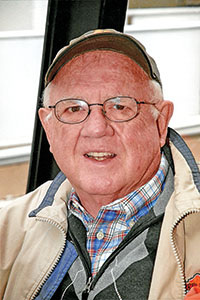Like many farriers, Dave Dawson sometimes finds it’s easier to get along with the horses he trims and shoes than with a few of their owners or trainers. But the Canadian farrier from Uxbridge, Ontario, says it’s critical to effectively deal with every client.
That 162 figure mentioned in the headline represents the number of clients a typical farrier works with during a year’s time. That number came from the recently completed 2012 Farrier Business Practices survey of American Farriers Journal readers.
Be Flexible
Managing clients effectively was among a number of topics covered at an early November clinic sponsored by Nature Farms Farrier Supply in Norman, Okla. Speakers were members of the board of directors of the American Association of Professional Farriers.
Dawson urged the 70 farriers in attendance to develop effective leadership skills in order to more effectively work with owners, trainers, riders, equine veterinarians, apprentices and others in the equine field. This means following common sense principles in being flexible and willing to adapt when tackling the different needs of clients. And he pointed out that no single program will be a perfect fit with all clients.
Before taking on a new client, Dawson schedules a meeting.
“I tell them that before I’ll take on their horses I want to learn about them, let them know how I work and what I expect from clients,” he says. “Spending this time has proven to be very valuable to both parties.”
And if there’s not a good fit, it’s advantageous to both parties to find a different solution.
These meetings help Dawson establish guidelines for developing a good farrier-to-client relationship. Plus, he gets a feel for what the horse owner or trainer knows about footcare.
“If a horse or owner isn’t happy at the end of the day, then I’m not happy and I don’t sleep very well that night,” he says. “But at the same time, you don’t want to worry about things you can’t control.”
Little Things Count
Dawson says it’s often the little things that can make a huge difference when working with clients.
For instance, he takes great pains to make sure the work area in a barn looks better when he leaves than it did when he arrived.
He stresses the importance of being on time for appointments, texting clients with details when you’re a few minutes late, keeping them informed about a problem horse and making sure your scheduling leaves enough time to get the entire day’s work done.
“As soon as you know you’re going to be late for your next appointment, call or text the client right away,” he says.
He urges farriers to always act with integrity. “It will help you sleep at night,” he says.








Post a comment
Report Abusive Comment